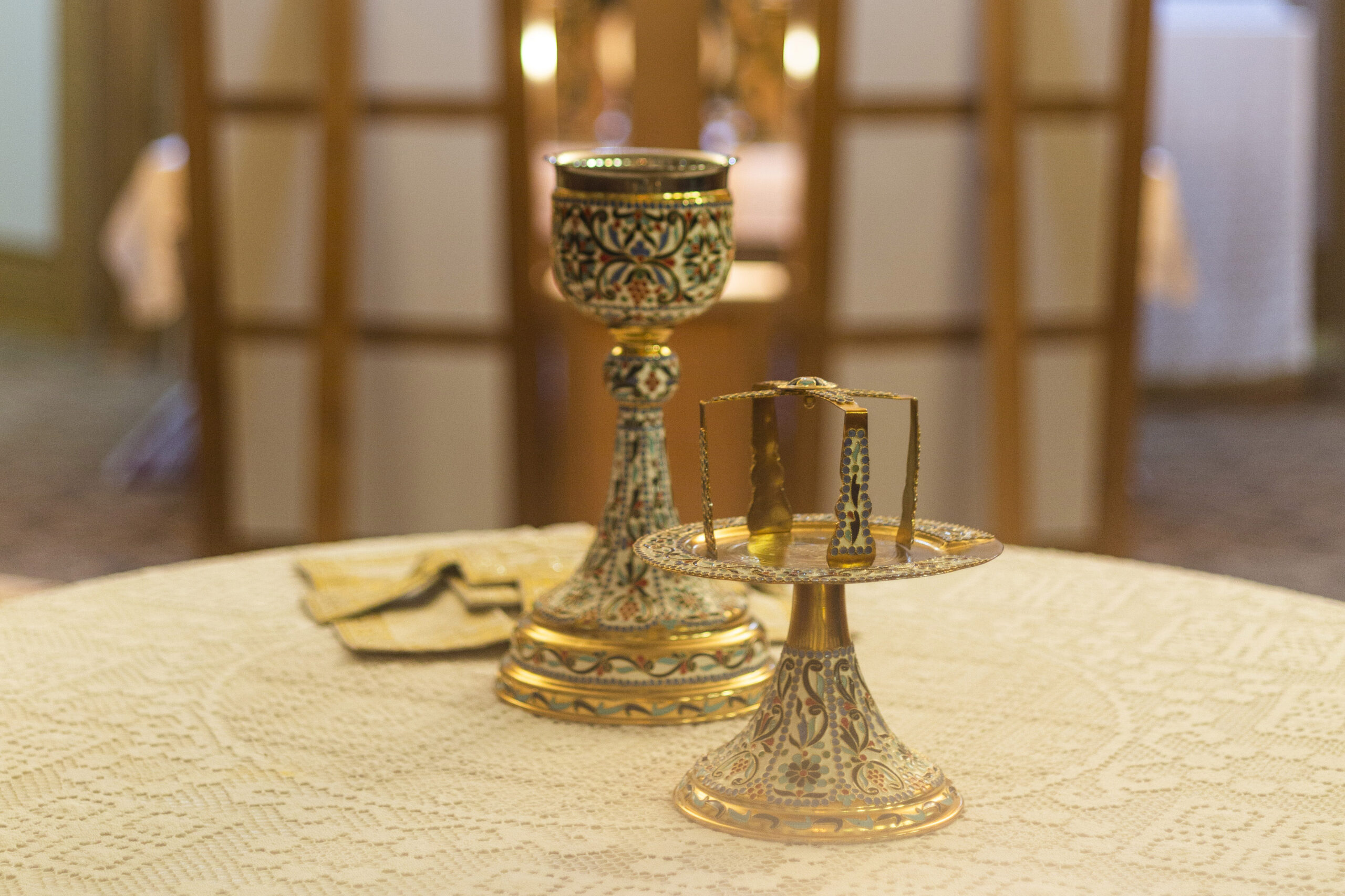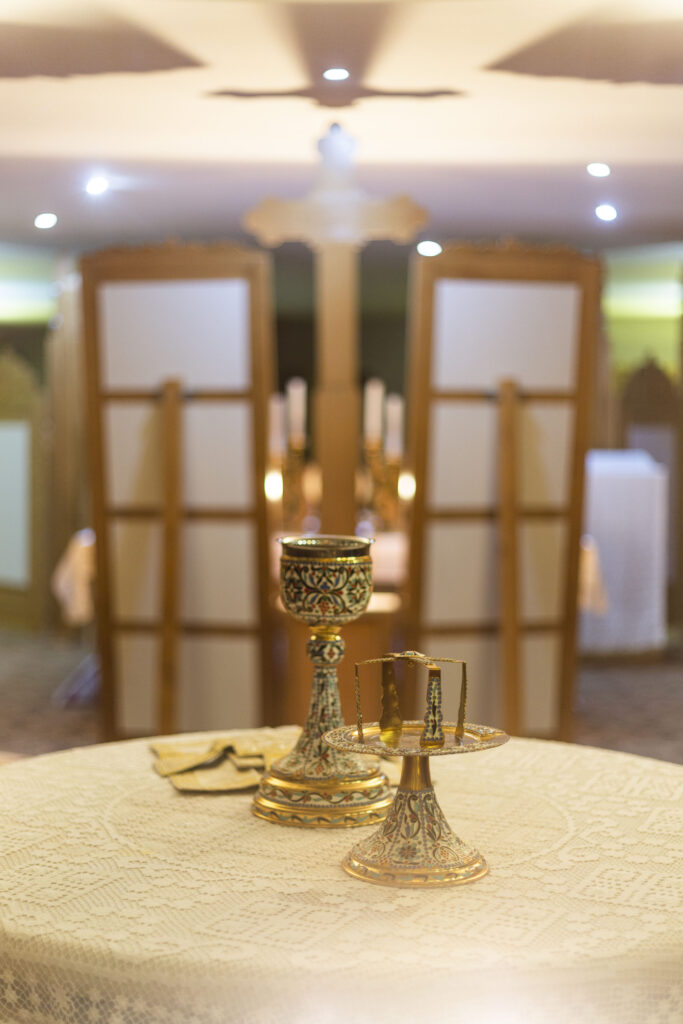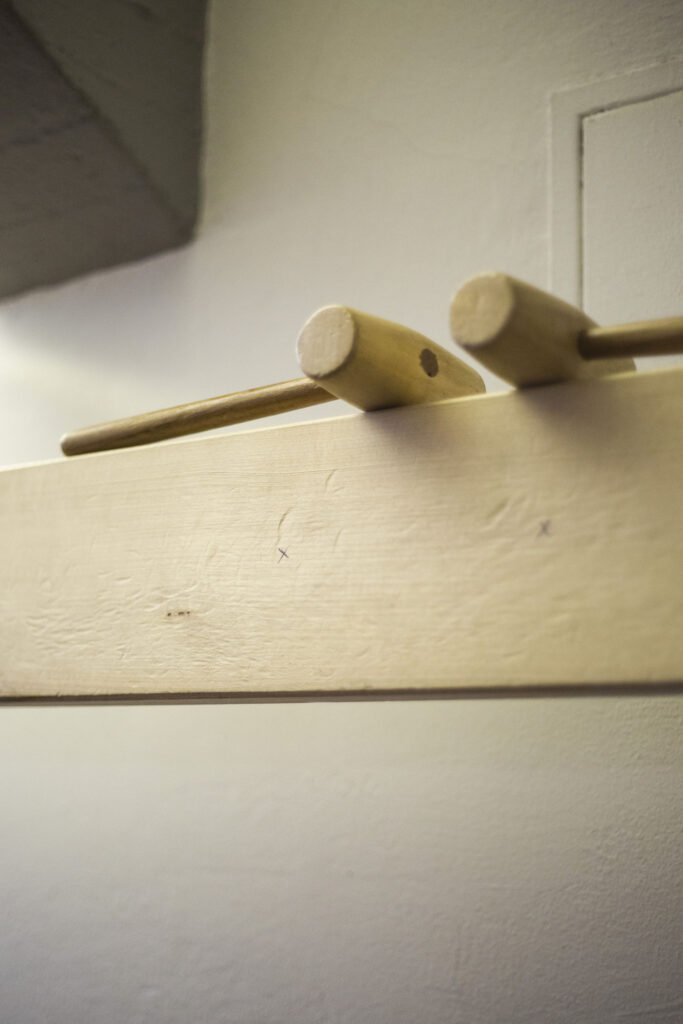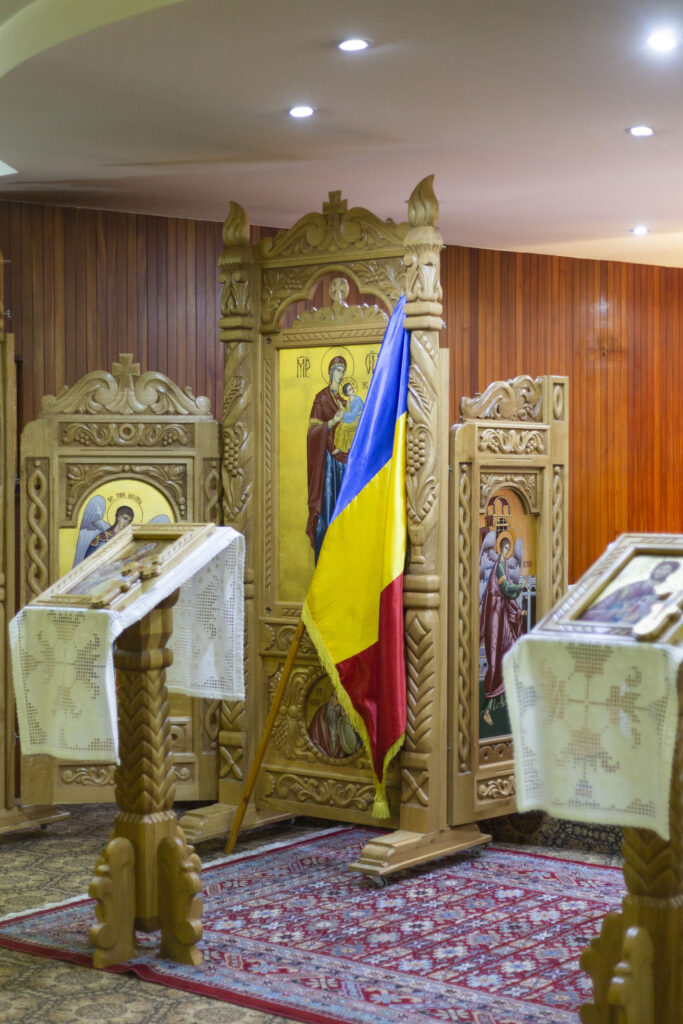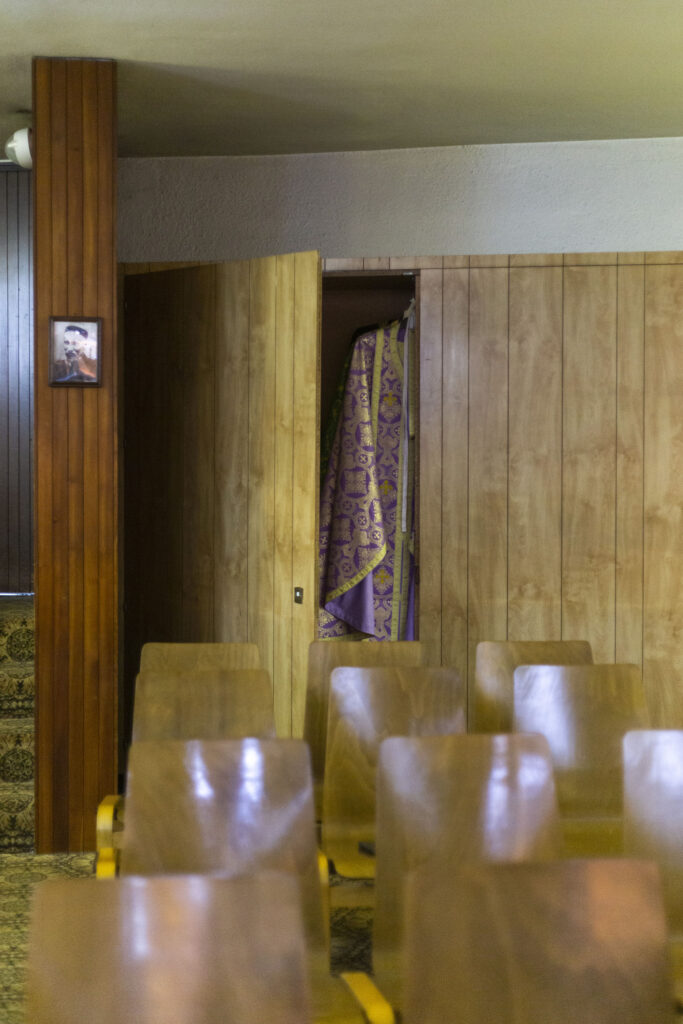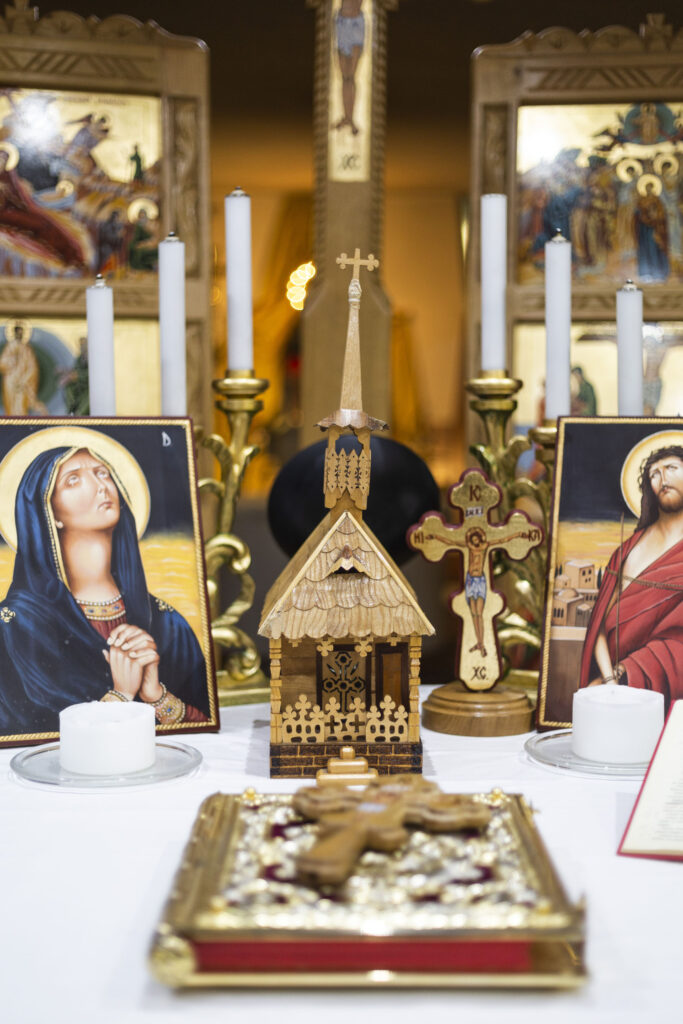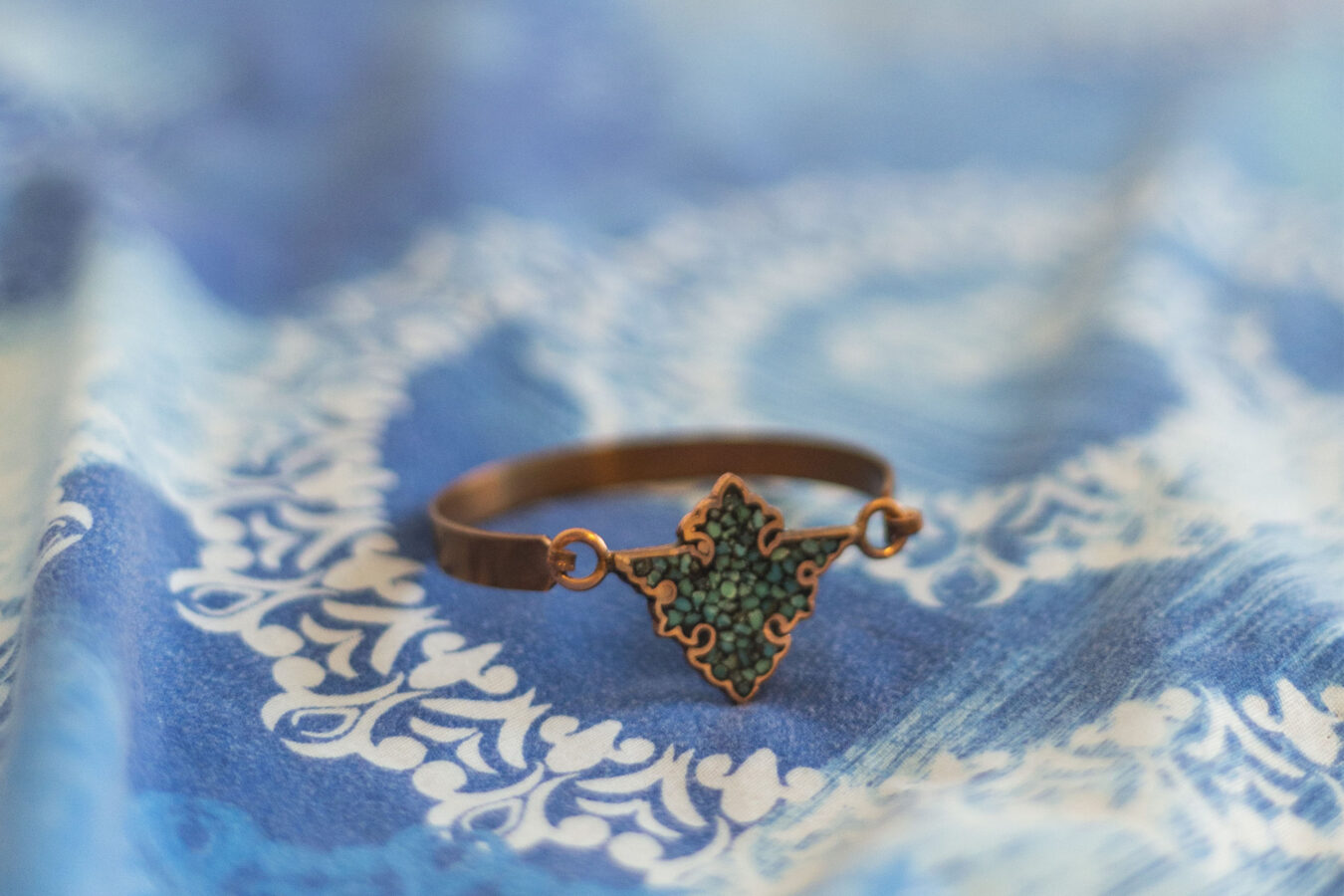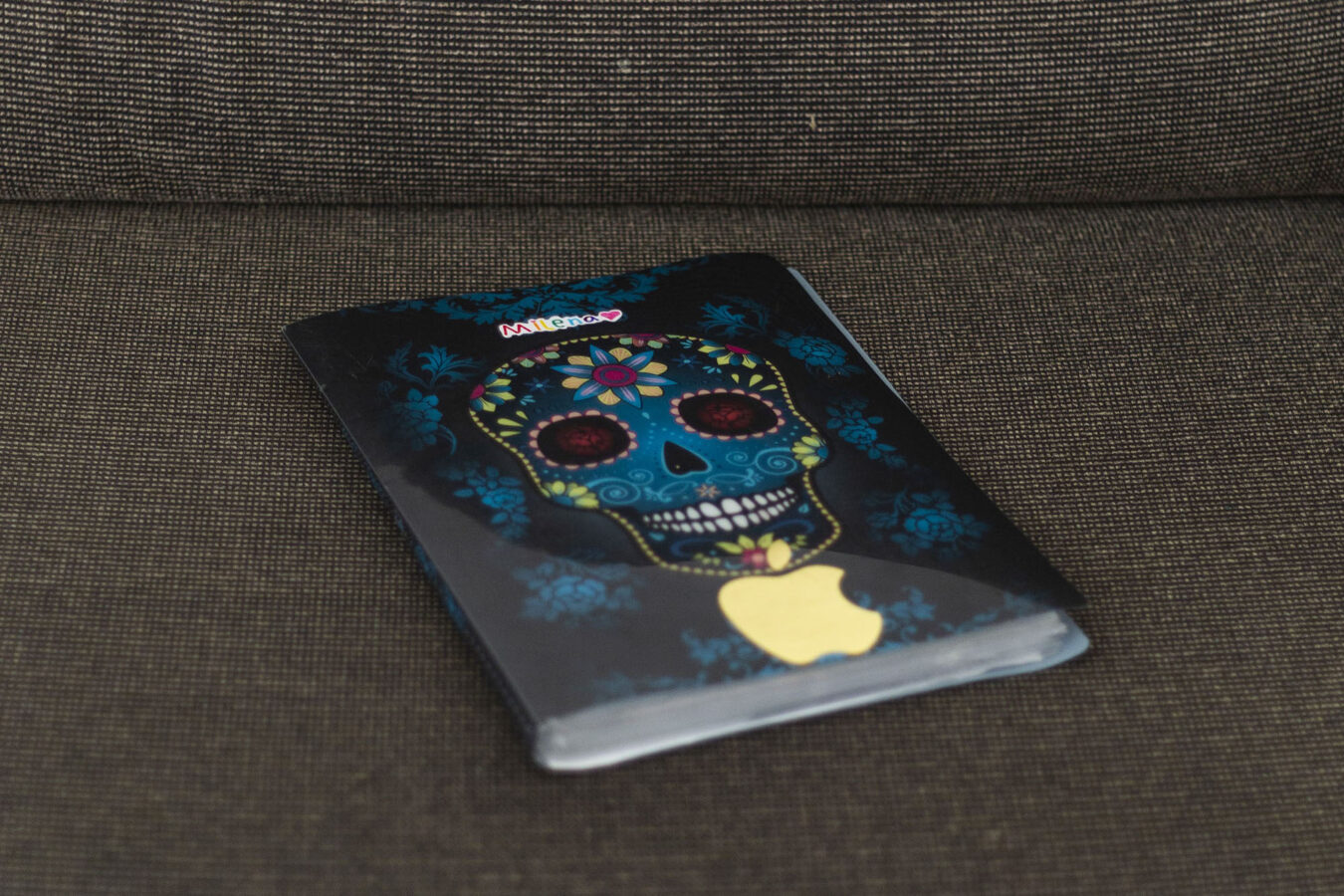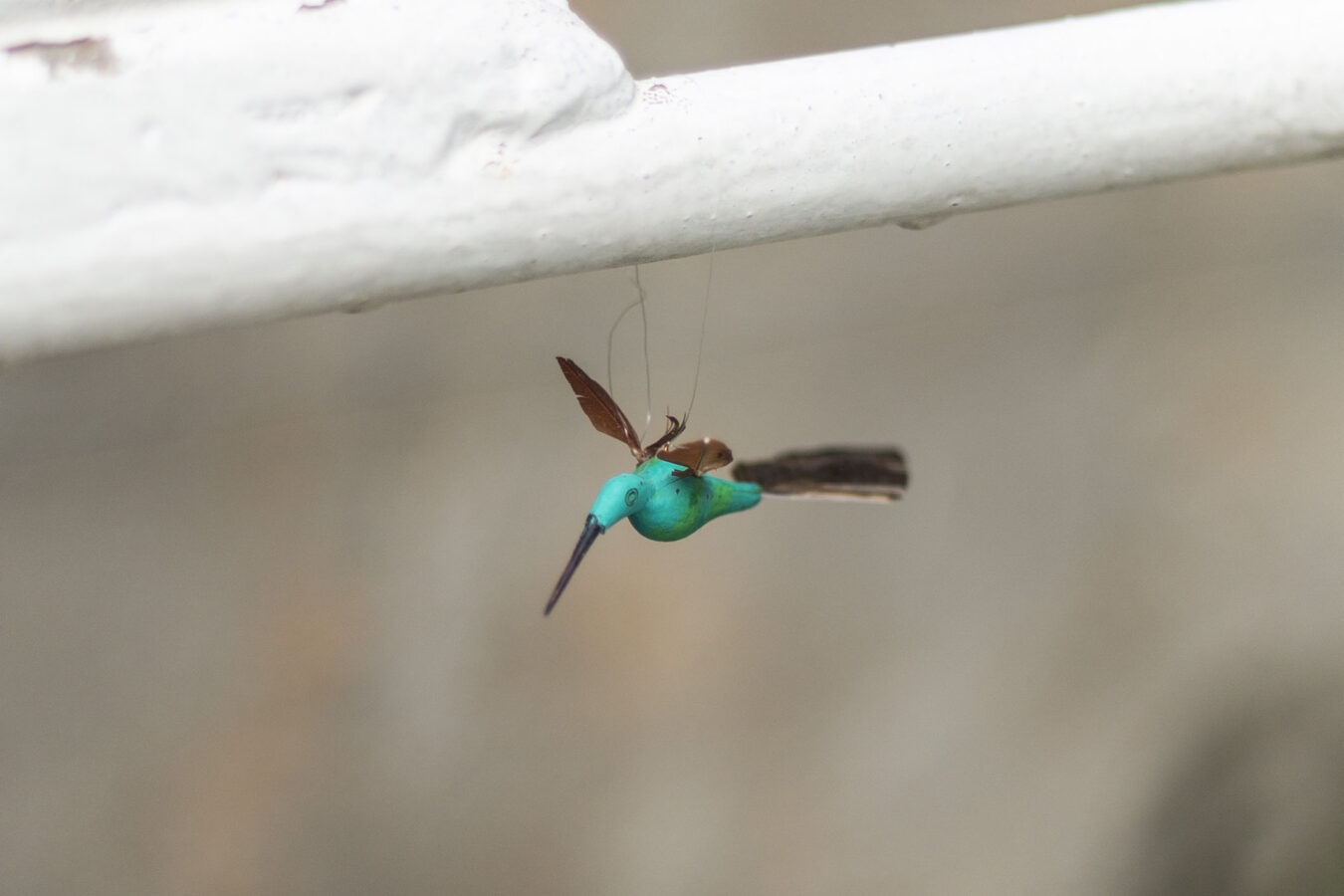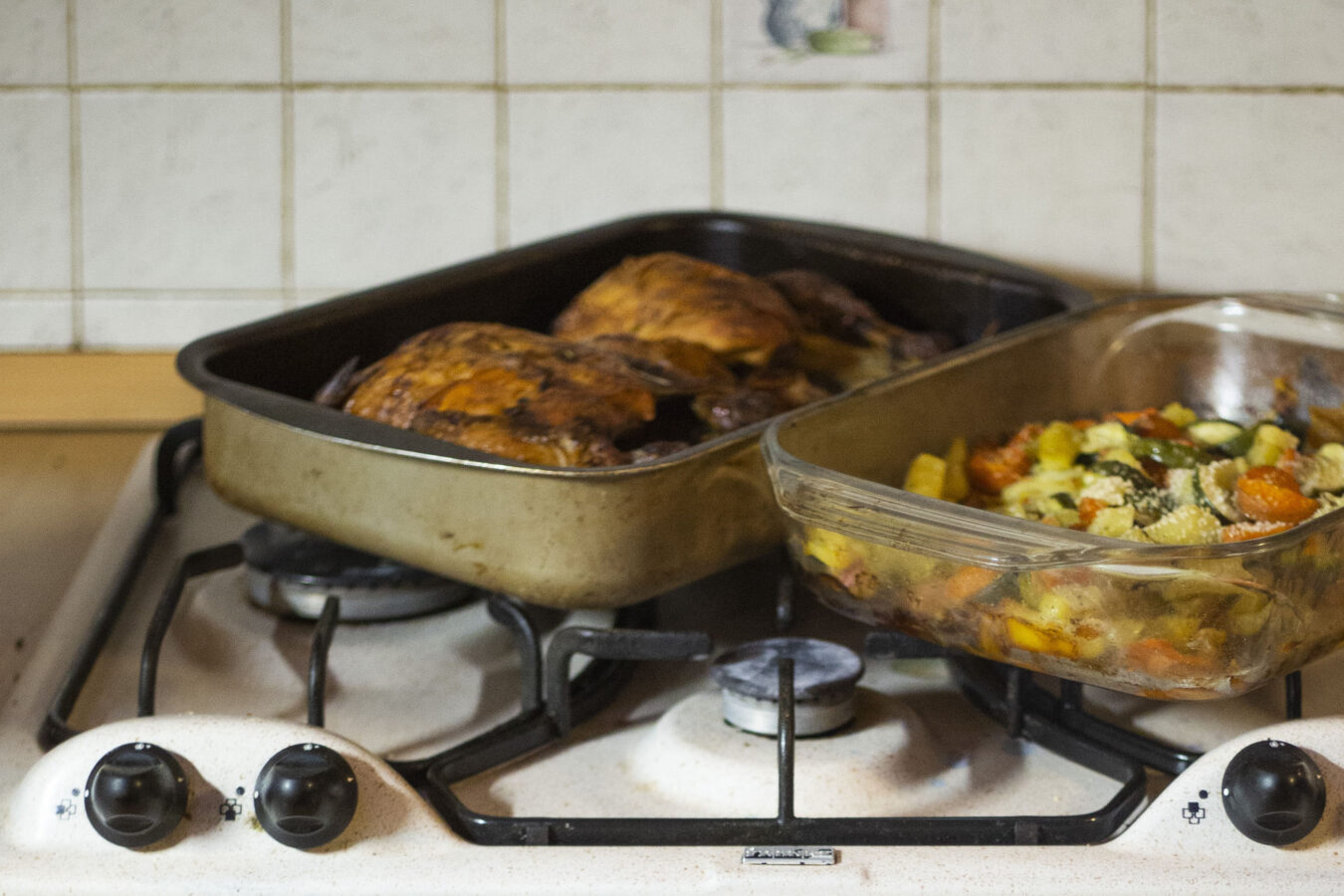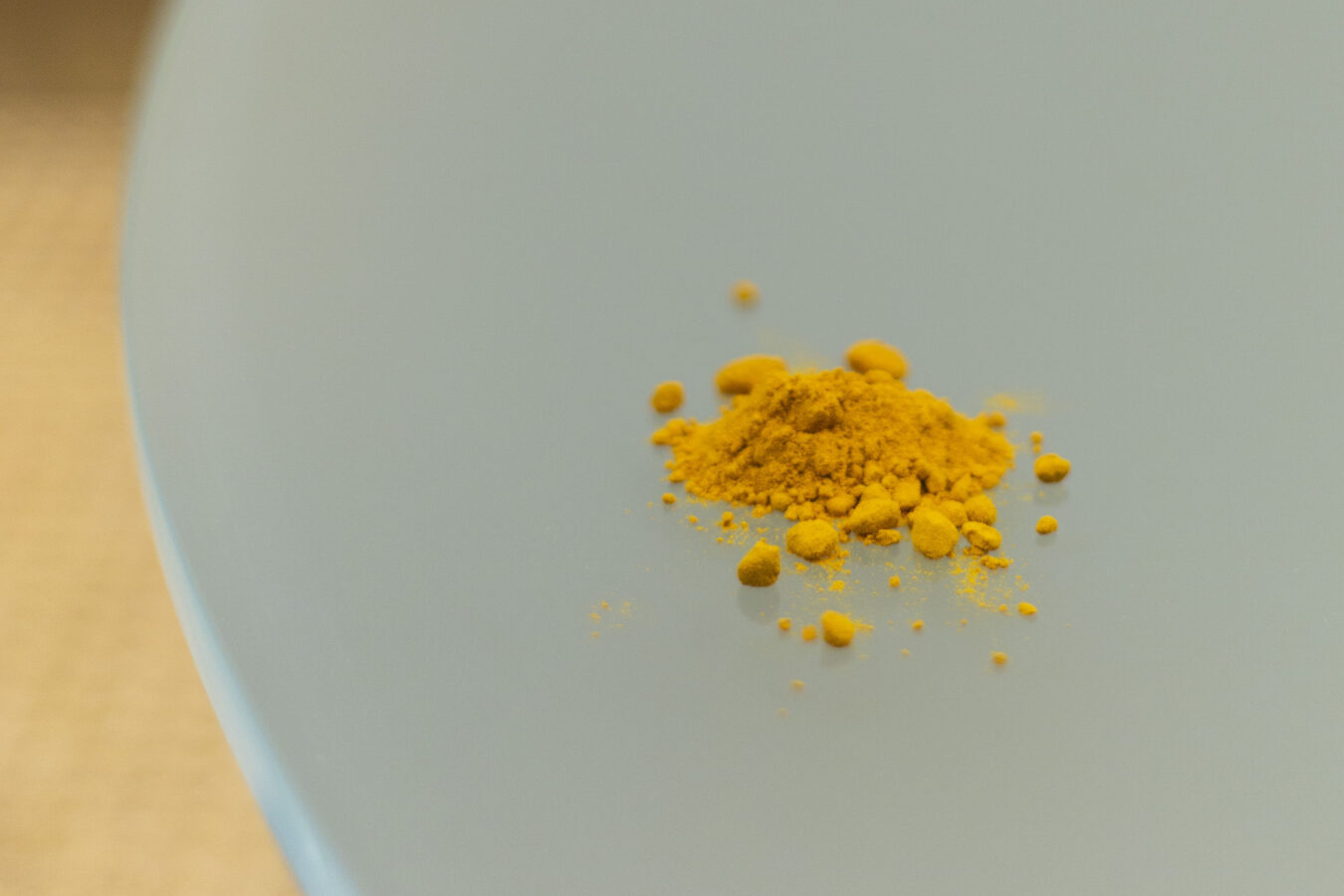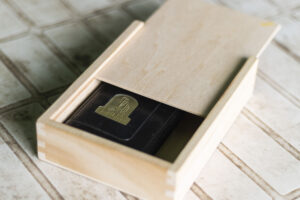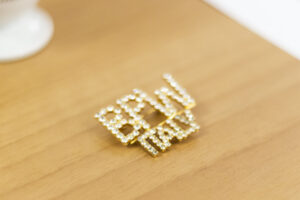Sono nato in Romania, mi chiamo Marius e ho fatto in Romania anche gli studi di teologia greco cattolica, cattolica ma di rito bizantino.
Sono arrivato in Italia nel 2003 per raggiungere mia moglie che già lavorava qui a Bolzano. Dal 2008 fino ad oggi ogni domenica tengo la messa per i cattolici di rito orientale, sempre alle 10:00. Quando arrivo, la domenica mattina, la prima cosa che faccio è vestirmi e poi inizio a fare tutto quello che si deve per le celebrazioni. La cerimonia è complessa ed è importante rispettare ogni dettaglio.
Pane senza lievito: lo offriamo alla Madonna, agli angeli, ai vivi, ai morti, alle autorità. Un pezzo di pane va al vescovo che ti ha consacrato e un altro per il vescovo del posto. Il calice serve a questo. Tra gli oggetti c’è anche la stella che ha condotto i Magi dal Bambino Gesù, e qui c’è anche un arco e un coltello come quello che ha ferito Gesù nel costato.
Quando senti il suono di questi martelli sul legno è l’inizio della messa. Di domenica, quando il sacrestano vede il sacerdote nel cortile della chiesa inizia a colpire il legno con questi martelli, e così i fedeli iniziano ad arrivare come seguendo i rintocchi di una campana, poi il sacrestano accende una candela che rappresenta la luce di Cristo, il sacerdote la alza e inizia la preghiera. Una cosa particolare, ma qui non si fa. Perciò mi ricorda il mio paese.
La mia comunità, simboleggiata dalle bandiere che la rappresentano.
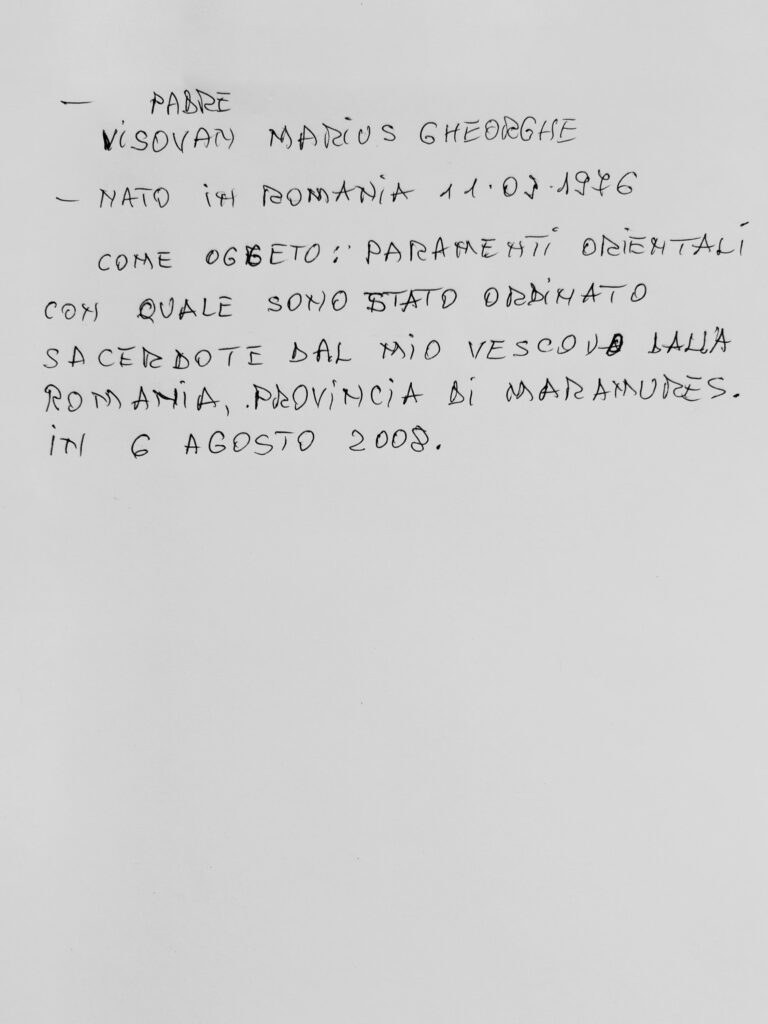
Prima di ogni paramento sacro il vescovo chiede al popolo se quella persona è degna di ricevere il sacerdozio. Se il popolo risponde di sì, il vescovo lo prende, lo bacia e lo appoggia. E così per tutti i paramenti sacri. La Chiesa cattolica ha 27 riti e uno di questi è quello greco-cattolico. Questo rito si svolge in Romania e in Ucraina. Il colore blu è per la Madonna, il rosso per i martiri o l’avvento, il giallo e il verde per i giorni, il bianco per le grandi feste, il nero per i funerali. Ogni colore si riferisce a qualcosa. La prima emozione che ho avuto è stata quando sono diventato sacerdote.
Ecco, alcune foto dei vestiti tradizionali. Con questo oggetto in legno si tiene la legna secca, qui vedi la famiglia e i figli e altre chiese (il Vaticano ha permesso il matrimonio per i sacerdoti del rito greco-cattolico), e questa miniatura di chiesa in legno, infine, che si usa come tabernacolo.
